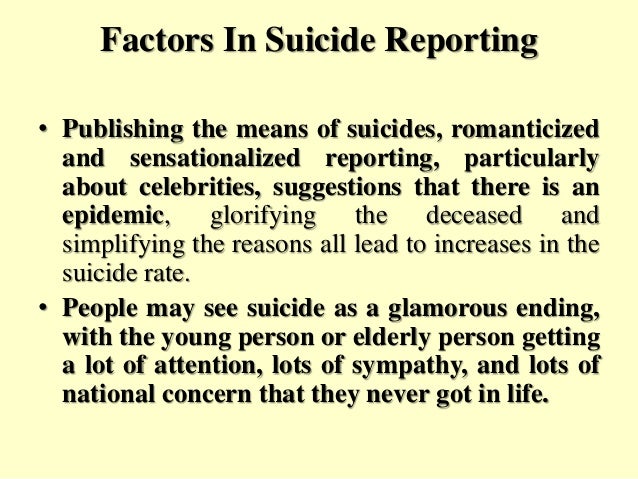Wednesday, March 20, 2019
Suicide Reporting Concern
It is well known that Korea ranks number one for suicide among the 36 countries of the Organization for Economic Cooperation and Development (OECD). Korea has held the top spot since 2003. So begins an article on suicides by a one-time editorial staff member of a daily newspaper.
The suicide rate in Korea is 25.8 people per 100,000 population and the average for OECD countries is 11.6 people. 36.8 people die each day from suicide.
According to the Ministry of Health and Welfare, the number of suicide deaths in Korea for the past four years from 2007 to 2011 was 71,196, which is more than the number of soldiers and civilians who died in the Iraqi and the Afghanistan war during the same period. Despite the recent decade of declining figures, it is still number one of the OECD country.
In addition, Korea has the lowest fertility rate among OECD countries. This is the reality the church needs to face since the respect of life is one of our greatest values.
Increase of the divorce rate and traffic accident deaths are also at the top of the world rankings, so we can't but look back to what has brought us to this situation. It may be the structural and inevitable consequence of our search for material growth. Now it's time for leisure to reflect on the meaning of life and develop a spirituality.
In the process, if the government and the people make a concerted effort, the suicide figures can be significantly lowered. Many countries have worked with the government, cooperating with various sectors of society. Finland is one good example.
Finland once had the highest suicide rate. She conducted a national suicide prevention project in the 1980s—a study of all the suicides for one year and with the results made a psychological 'autopsy' and for a period of 10 years implemented countermeasures, reducing the numbers by more than half.
There was a great deal of media coverage. They were careful in the way they covered the suicide cases. The media actively participated in the suicide prevention project. Well, known is the fact that the media can incite those with these thoughts to mimic the suicide they read about, a fact that has been confirmed through various surveys. In 2008, when a well-known actress committed suicide, the number of suicides increased by more than 1,000, from the norm and the manner of death increased nearly two-fold. At that time, the media spent a great deal of time reporting on the suicide and her family.
The Korea Journalists Association established a 'Code of Ethics for Suicide Reporting' in 2004 with the Korea Suicide Prevention Association and revised it some years later. Recommendations are based on nine principles: minimizing the reports on suicide, prohibiting the positive report of the suicide, and prohibiting specific descriptions of suicide and methods— there are nine such recommendations. The reporting on suicides needs to be taken seriously.
However, media don't always adhere to the standards and codes of ethics. Today, there are numerous kinds of internet media, not only traditional media such as newspapers, broadcasts, movies, etc, so cooperation of media for suicide prevention becomes more important. Many sites where clicks themselves are directly linked to profits, actively exploit suicide articles. Methods and means are shown in detail through articles, pictures, and videos.
If great change came to the way the media covered the values of life it would be a great gift to society. However, encouraging suicide, and failing to support the value of life will be a disaster, worse than fake news.
Subscribe to:
Comments (Atom)
